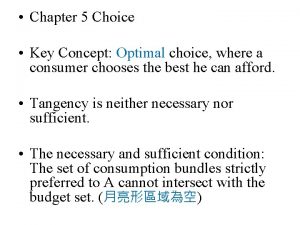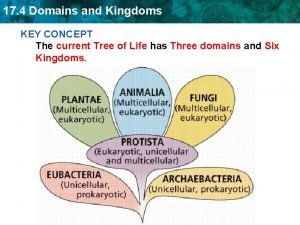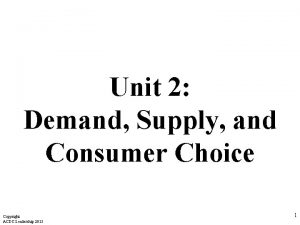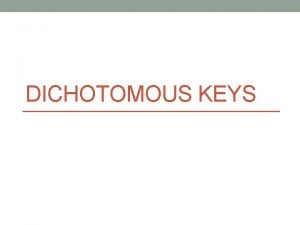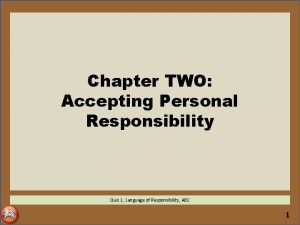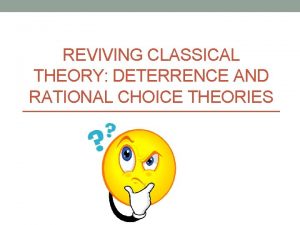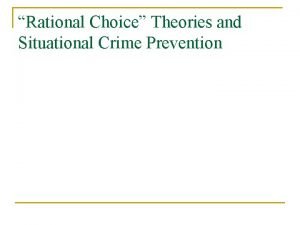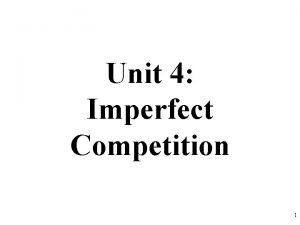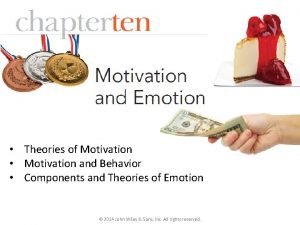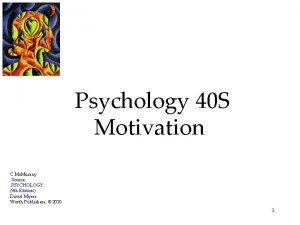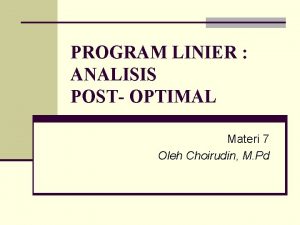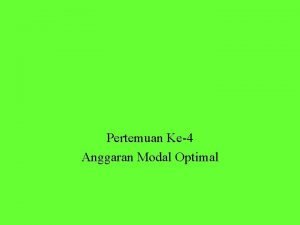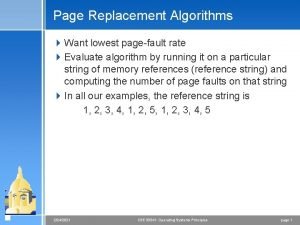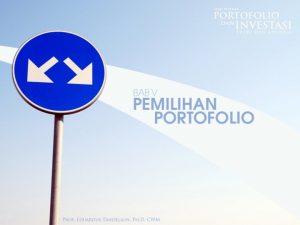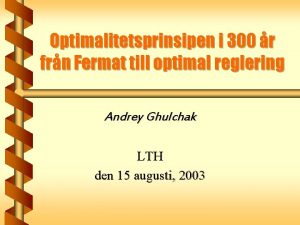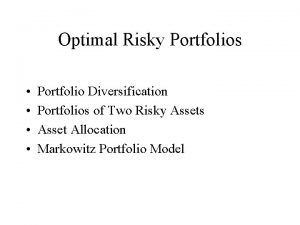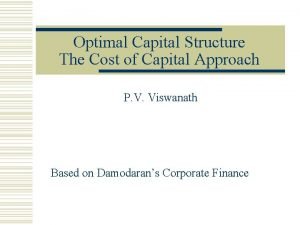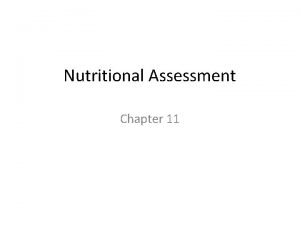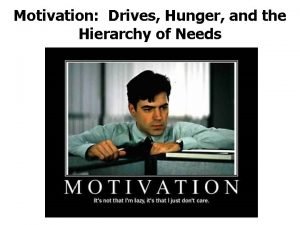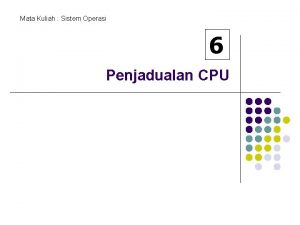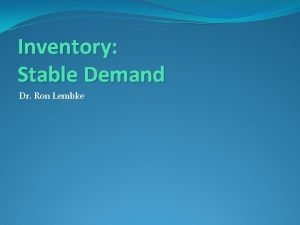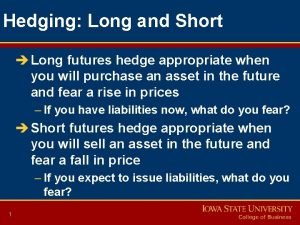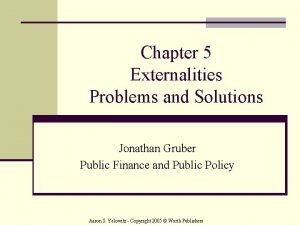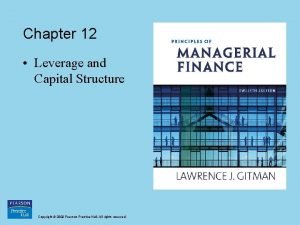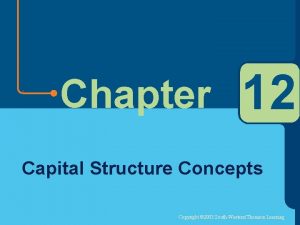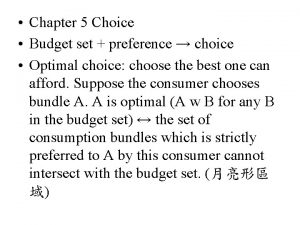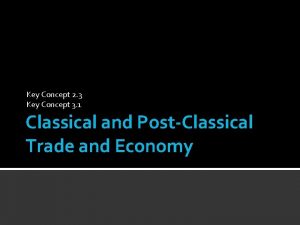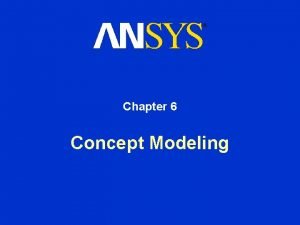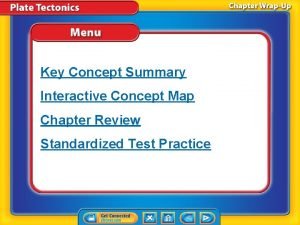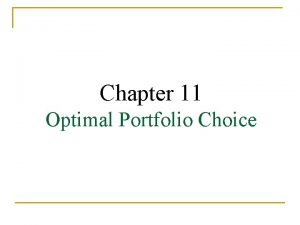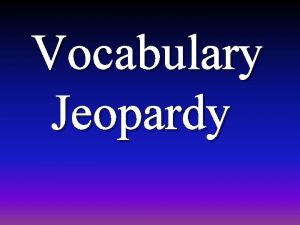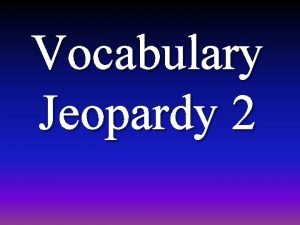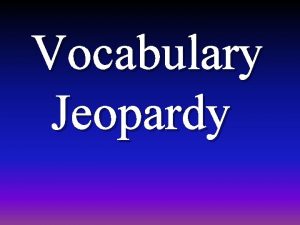Chapter 5 Choice Key Concept Optimal choice where













































- Slides: 45

• Chapter 5 Choice • Key Concept: Optimal choice, where a consumer chooses the best he can afford. • Tangency is neither necessary nor sufficient. • The necessary and sufficient condition: The set of consumption bundles strictly preferred to A cannot intersect with the budget set. (月亮形區域為空)

• Chapter 5 Choice • budget set + preference → choice • Optimal choice: the best one can afford.


• Suppose the consumer chooses bundle A. • A is optimal A w B for any B in the budget set ↔ The set of consumption bundles strictly preferred to A cannot intersect with the budget set. (月亮形區域為空)

A

sufficient optimum necessary

• typhoon → rain → wet sufficient optimum necessary

• A optimal↔月亮形區域為空. A optimal →月亮形區域為空? (necessary) If not, then 月亮形區域不為空. That means there exists a bundle B such that B s A and B is in the budget set. • Then A is not optimal. • •

• A optimal↔月亮形區域為空. • A optimal ←月亮形區域為空? • (sufficient) • All B such that B s A is not affordable, so for all B in the budget set, we must have A w B. • Hence A is optimal.

• The indifference curve tangent to the budget line is neither necessary nor sufficient for optimality. sufficient optimum necessary

• necessary: optimal → tangent • optimal not tangent • kinked preferences • tangent is not defined • (intuition)


• necessary: optimal → tangent • optimal not tangent • corner solution 角解 • vs. interior solution 內解 • (intuition)


• sufficient: tangent → optimal • tangent not optimal • satiation


• sufficient: tangent → optimal • tangent not optimal • convexity is violated


• Despite all of these, the usual tangent condition MRS 1, 2= -p 1/ p 2 has a nice interpretation. • So we still need to get the economic intuition.

• The MRS is the rate the consumer is willing to pay for an additional unit of good 1 in terms of good 2. • The relative price ratio is the rate the market asks a consumer to pay for an additional unit of good 1 in terms of good 2. • At optimum, these two rates are equal. ( 主觀相對價格 vs. 客觀相對價格)

• If they are not equal, we will get: • when |MRS 1, 2| > p 1/ p 2 • should buy more of 1 • when |MRS 1, 2| < p 1/ p 2 • should buy less of 1

• We now know what the optimal choice is, let us turn to demand since they are related.

• The optimal choice of goods at some price and income is the consumer’s demanded bundle. • A demand function gives you the optimal amount of each good as a function of prices and income faced by the consumer.

• Denote the demand function x 1 (p 1, p 2, m). • At p 1, p 2, m, the consumer demands x 1 • Let us work out some examples.

• Perfect substitutes • u(x 1, x 2) = x 1 + x 2 • p 1 > p 2: x 1 = 0, x 2 = m/ p 2 • p 1 = p 2: x 1 belongs to [0, m/ p 1] and x 2 = (m- p 1 x 1)/p 2 • p 1 < p 2: x 1 = m/ p 1, x 2 = 0


• Perfect complements • u(x 1, x 2) = min{x 1, x 2} • x 1 = x 2 = m/ (p 1+ p 2)


• Neutrals or bads • Why spend money on them?

• Discrete goods • Just compare.


• Non convex preferences • Probably a corner solution


• Cobb-Douglas • u(x 1, x 2) = x 1 ax 21 -a • u(x 1, x 2) = a lnx 1 + (1 -a) lnx 2 • |MRS 1, 2| = p 1/ p 2 • (a/x 1)/[(1 -a)/x 2] = p 1/ p 2

• |MRS 1, 2| = p 1/ p 2 • (a/x 1)/[(1 -a)/x 2] = p 1/ p 2 • a/(1 -a) = p 1 x 1/ p 2 x 2 • x 1 = am/ p 1 and x 2 = (1 -a)m/ p 2 • This is useful if when we are estimating utility functions, we find that the expenditure share is fixed.


• Implication of the MRS condition: at equilibrium, we don’t need to know the preferences of each individual, we can infer that their MRS’ are the same. • This has an useful implication for Pareto efficiency because if their MRS’ are different, they can trade and Pareto improve.

• One small example: butter (price: 2) and milk (price: 1) • A new technology that will turn 3 units of milk into 1 unit of butter. Will this be profitable? • Another new tech that will turn 1 unit of butter into 3 units of milk. Will this be profitable?

• quantity tax and income tax • If the government wants to raise a certain amount of revenue, is it better to raise it via a quantity tax or income tax?

• Suppose gov imposes a quantity tax of t dollars per unit of x 1. • budget constraint: (p 1+t) x 1 + p 2 x 2 = m • at optimum: (x 1*, x 2*) so that • (p 1+t) x 1* + p 2 x 2* = m • tax revenue is t x 1* • to compare, we want income tax R* to raise the same revenue • R* = t x 1*

• (x 1’, x 2’) is the optimum with income tax. • p 1 x 1’+ p 2 x 2’ = m - R* but we know that • (p 1+t) x 1* + p 2 x 2* = m • p 1 x 1* + p 2 x 2* = m - t x 1* • p 1 x 1* + p 2 x 2* = m - R* • so (x 1*, x 2*) is on the income tax budget line • Hence, (x 1’, x 2’) w (x 1*, x 2*).


• Income tax better than quantity tax? • For any consumer, we can find an income tax raising the same tax revenue and the consumer is better off. • Yet the amount of income tax will differ from consumer to consumer. • uniform income tax vs. quantity tax (consider those who do not consume good 1)

• Income tax might discourage earning. • We ignore supply side

• Chapter 5 Choice • Key Concept: Optimal choice, where a consumer chooses the best he can afford. • Tangency is neither necessary nor sufficient. • The necessary and sufficient condition: The set of consumption bundles strictly preferred to A cannot intersect with the budget set. (月亮形區域為空)
 Optimal choice
Optimal choice Chapter 4 lesson 4: metamorphic rocks answer key
Chapter 4 lesson 4: metamorphic rocks answer key Lesson 1 waves answer key
Lesson 1 waves answer key Revenue streams example business model canvas
Revenue streams example business model canvas Key partners
Key partners Chapter 34 circulation in humans concept mapping answer key
Chapter 34 circulation in humans concept mapping answer key Amphibia characteristics
Amphibia characteristics Concept mapping domains and kingdoms
Concept mapping domains and kingdoms Chapter 34 circulation in humans concept mapping answer key
Chapter 34 circulation in humans concept mapping answer key Good choice or bad choice
Good choice or bad choice The real and ideal self concept
The real and ideal self concept Perbedaan selling concept dan marketing concept
Perbedaan selling concept dan marketing concept Unit 2 demand supply and consumer choice answer key
Unit 2 demand supply and consumer choice answer key Dichotomous key for beetles
Dichotomous key for beetles An example of a parallel choice on a dichotomous key is
An example of a parallel choice on a dichotomous key is Quiz 1: personal choices
Quiz 1: personal choices Rational choice theory
Rational choice theory Rational choice theory key concepts
Rational choice theory key concepts Price ceiling on monopoly
Price ceiling on monopoly Optimal arousal theory
Optimal arousal theory Karan kathpalia
Karan kathpalia Incentive theory
Incentive theory Contoh soal analisis sensitivitas program linear
Contoh soal analisis sensitivitas program linear Product availability example
Product availability example Anggaran modal
Anggaran modal Online page fault calculator
Online page fault calculator Contoh portofolio optimal
Contoh portofolio optimal 300 är optimal
300 är optimal Optimal portfolio diversification
Optimal portfolio diversification Optimal cost of capital
Optimal cost of capital Define optimal nutritional status
Define optimal nutritional status Hunger games hierarchy
Hunger games hierarchy Kriteria penjadualan yang optimal terdiri dari ?
Kriteria penjadualan yang optimal terdiri dari ? Rumus model miller dan orr
Rumus model miller dan orr Optimum inventory level
Optimum inventory level Optimal resume wwu
Optimal resume wwu Pareto-optimal
Pareto-optimal How to achieve optimal health and wellness
How to achieve optimal health and wellness Long hedge in futures
Long hedge in futures Define optimal strategy in game theory
Define optimal strategy in game theory Optimal driver launch angle and spin rate chart
Optimal driver launch angle and spin rate chart Socially optimal level
Socially optimal level Hedge ratio
Hedge ratio What is optimal self confidence
What is optimal self confidence Optimal capital structure formula
Optimal capital structure formula How to calculate optimal capital structure
How to calculate optimal capital structure
